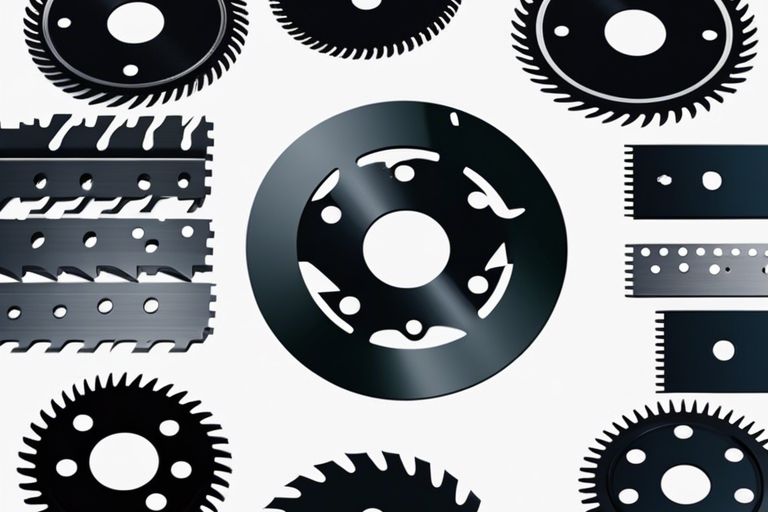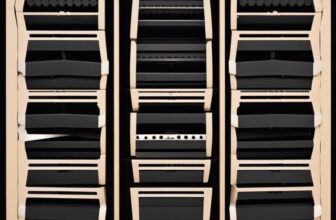Are circular saw blades universal

Connoisseurs and novices alike in carpentry often ponder the all-important question – Are circular saw blades universal? The answer to this query lies in the complicated world of power tools. Understanding the compatibility of circular saw blades is crucial as the wrong blade can lead to dangers like kickback or improper cuts. However, the good news is that most circular saws accommodate blades of various sizes and types, although there are a few exceptions. Dive into this guide to decipher the key aspects of circular saw blades and unravel the mystery of their universality.
Key Takeaways:
- Circular saw blades are NOT universal: Different saws require specific blade sizes and arbor sizes to function properly.
- Compatibility is key: Always check the manufacturer’s specifications to ensure the blade is suitable for your particular circular saw model.
- Choose the right blade for the job: Different blades are designed for different materials and cutting applications, so select the appropriate blade for optimal performance and safety.

Understanding Circular Saw Blades
While circular saws are imperative tools for woodworking and construction projects, understanding the different components of the saw is crucial for achieving the best results. One of the key elements of a circular saw is the blade, which plays a vital role in determining the type of cut and material that can be used with the saw.
Types of Circular Saw Blades
Blades for circular saws come in various types, each designed for specific materials and cutting tasks. From general-purpose blades to fine-cut blades and abrasive blades for cutting metal, choosing the right blade type is imperative for optimal performance. Understanding the differences between blade types can help you select the most appropriate blade for your project.
| General-Purpose Blades | Optimal for cutting wood, plywood, and other common materials |
| Fine-Cut Blades | Designed for precise and clean cuts in hardwood and softwood |
| Abrasive Blades | For cutting metal, concrete, and other tough materials |
| Diamond Blades | Ideal for cutting tiles, stone, and masonry |
| Dado Blades | Specialized for making wide cuts and grooves |
Perceiving the specific requirements of your project will help you determine the most suitable blade type for your circular saw.
Blade Size and Compatibility
There’s a wide range of blade sizes available for circular saws, with diameters typically ranging from 4 inches to 12 inches or more. Choosing the right size blade is crucial for ensuring compatibility with your saw and achieving optimal cutting performance. Make sure to check your saw’s specifications to determine the maximum blade size it can accommodate.
Another important factor to consider is the arbor size of the blade, which must match the arbor size of your saw. Using an incorrectly sized blade can lead to dangerous kickbacks and poor cutting results. Always refer to the manufacturer’s guidelines for the correct blade size and compatibility for your specific circular saw model.

Determining Blade Universality
Arbor Size Considerations
Many circular saw blades have a universal arbor size of 5/8 inches, which fits most saws. However, it’s crucial to check the arbor size of your specific saw to ensure compatibility. Using a blade with the wrong arbor size can result in a loose fit, causing vibrations and compromising the quality of your cuts.
Blade Tooth Configuration and Material
You should consider the tooth configuration and material of the blade when determining its universality. The tooth configuration determines the type of cuts the blade is designed for, such as ripping or crosscutting. The material of the blade also plays a role in its versatility; carbide-tipped blades are durable and suitable for various materials, while high-speed steel blades are more cost-effective but wear out faster.
Size also matters when it comes to blade tooth configuration. Different sizes and shapes of teeth are designed for specific applications, such as fine-cutting blades for smooth finishes or aggressive-cutting blades for faster cuts through tough materials.
Understanding
Understanding these factors and ensuring compatibility with your saw is vital for the safety and efficiency of your cutting projects. Using the wrong blade can result in kickback, overheating, and poor cuts, while the right blade can enhance the performance of your saw and produce high-quality results.

Factors Affecting Blade Selection
Keep in mind that choosing the right circular saw blade involves considering various factors. Here are some key points to keep in mind:
Material to be Cut
Assuming you intend to cut different types of materials, such as wood, metal, or plastic, you will need blades specifically designed for each type. Circular saw blades come in different configurations and tooth designs to suit various materials, ensuring clean and efficient cuts.
Saw Brand and Model
Any circular saw blade you choose must be compatible with your saw’s brand and model. Not all blades fit all saws, so it’s important to check the specifications provided by the manufacturer. Using an incompatible blade can lead to dangerous situations and damage to your equipment.
This factor is crucial in ensuring optimal performance and safety when using your circular saw. Always refer to the saw’s manual or contact the manufacturer to determine which blades are recommended for use with your specific model.
How to Choose the Right Blade
Matching Blade to Saw Specifications
Despite the popularity of circular saws, not all blades are universal. It is crucial to match the blade to the specifications of your saw. This includes the blade diameter, arbor size, and the maximum speed ratings. Using the wrong blade can lead to poor performance and even dangerous situations.
Balancing Performance and Cost
Little is said about balancing performance and cost when choosing a circular saw blade. While it may be tempting to opt for the cheapest option, it is important to consider the quality of the blade. Choosing a high-quality blade may cost more initially, but it will last longer and provide better results in the long run.
There’s a wide range of circular saw blades available on the market, each offering different features and capabilities. When deciding on a blade, consider the material you will be cutting, the desired finish, and the frequency of use. Investing in a good quality blade suited to your specific needs will ultimately save you time and money.
Conclusion
Many circular saw blades fit different saws and cutting tasks, making them highly versatile. However, it is vital to ensure the compatibility of the blade with the saw you are using. Manufacturers provide specifications that should be followed to guarantee safety and efficiency. Investing in a quality universal blade, such as the Circular Universal Saw Blade HSS (120 teeth) – REMS Tools, can expand the capabilities of your saw and deliver precise and smooth cuts across different materials.
FAQ
Q: Are circular saw blades universal?
A: Circular saw blades are not universal. Different types of circular saw blades are designed for specific materials and cutting applications. It is important to select the correct blade based on the material you are cutting to achieve the best results.
Q: How do I know which circular saw blade to use?
A: To determine which circular saw blade to use, consider the material you will be cutting. For example, there are blades designed for cutting wood, metal, plastic, or laminate. Check the blade packaging or manufacturer’s specifications to ensure it is suitable for your intended material.
Q: Can I use any size circular saw blade with my saw?
A: It is important to use the correct size of the circular saw blade recommended for your specific saw. Using the wrong size blade can lead to safety hazards and poor cutting performance. Always refer to your saw’s user manual to identify the appropriate blade size and specifications for your saw.





